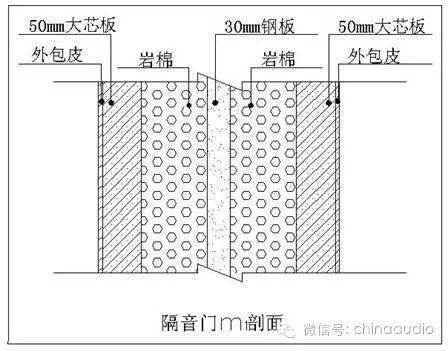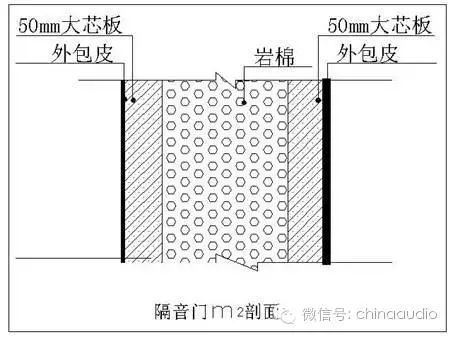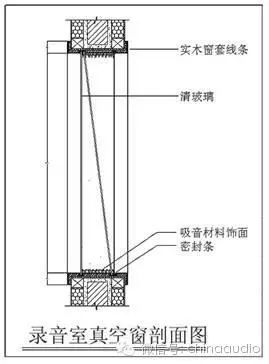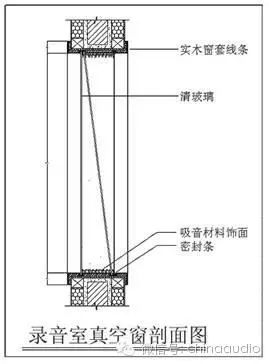Recording studio design requirements
The acoustic environment of the recording studio shall meet the relevant national regulations. The sound effect, reverberation coefficient, background noise and sound uniformity in the recording studio are comprehensively designed to achieve a professional multi-functional digital recording studio. In the overall design, it is necessary to consider not only various professional requirements in program production, but also comfortable visual effects, so as to provide the best music recording production conditions as much as possible. Technological process and work safety, so as to ensure the smooth progress of the program production, so that the participating audience can enjoy spiritual enjoyment in a safe and pleasant environment.
wall construction process
The construction quality of the wall and the wall plays a very important role in the decoration of the recording studio. The quality of the wall is good or bad, which fundamentally affects the acoustic effect and post-recording effect of the recording studio. The construction and treatment process of walls and walls mainly includes sound insulation, re-sound insulation, noise reduction, sound insulation and acoustic treatment of walls and walls; general conventional building thickness and sound insulation effect are difficult to meet the decoration needs of recording studios, so it must be The original sound insulation treatment is carried out, and the sound insulation decoration is carried out on the basis of the original sound insulation treatment, and then the acoustic effect treatment of the wall is carried out. In this way, it can be well ensured that the recording studio can achieve the acoustic effect in the decoration, so as to ensure the quality of the recording in the later stage.
(1) Construction process drawing of the wall of the recording studio

(2) Construction process drawing of the control room wall

Floor and ground construction treatment technology
The floor treatment is very demanding in today’s recording studios, especially digital recording studios. The main function of the floor in the recording studio is sound insulation, suspension, moisture-proof and anti-static functions. According to the existing conditions of the site, on the basis of the original ground, the keel is used to raise it, on the one hand to achieve a suspended state, on the other hand, it has the functions of vibration isolation and moisture resistance, and then the solid wood floor is treated on the keel, and the thickness should not be low. to 10 mm, so as to carry out the treatment of vibration isolation. In addition, the floor of the control room should be treated with anti-static to prevent the equipment from being burnt out due to static electricity.
The floor construction treatment process is as follows:
Recording studio ground construction process drawing

(2) Construction process drawing of the control room ground

The construction process of the top of the recording studio
The construction treatment of the top of the recording studio is mainly sound insulation and acoustic effect treatment. The thickness between ordinary floors and its sound insulation effect are completely unable to meet the needs of recording. It is necessary to perform sound insulation treatment on the original top of the large core board again, and then perform recording acoustic effect processing on this basis, thereby making up for the
The sound insulation of the original top is insufficient, and at the same time, the acoustic effect of the top can be processed to meet the acoustic standards and post-recording effects.
The construction process of the top of the recording studio is as follows:

Door body construction process
The door is the channel for entering and leaving the recording studio, and it is also one of the most important processing procedures in the decoration process of the recording studio. The processing technology of the door will also directly affect the recording effect. Therefore, in the process of processing the door of the recording studio, it is necessary to use a three-thick trapezoid processing process, that is, three-layer sound insulation and trapezoidal “stitching”. So as to ensure the sound insulation effect of recording studio, control room and the outside world.
(1) Construction process drawing of studio door (M1)

(2) Construction process drawing of the control room door (the second money supply)

Observation window construction processing technology
The observation window is one of the most important processing procedures in the decoration process of the recording studio. It not only needs to achieve an effective observation space, but also achieves sound insulation effect. We have adopted three-layer and bevel treatment process, and the edge is treated with solid wood. It can ensure the sound insulation effect and also ensure its aesthetics. The construction and treatment process of the observation window is as follows:


The construction and treatment process of the J corner of the recording studio
Sometimes due to the limited space and the reasonable distribution of the room size and the satisfaction of the user to the system, the recording studio and the control room are separated, thus forming an irregular J angle after the segmentation. In order to further ensure the acoustic standard and the effect of post-recording, it is necessary to perform acoustic processing on the divided irregular J-angle, so that the whole recording environment can achieve the best effect. The construction and treatment process of the J corner of the recording studio is as follows:
.jpg)
Air conditioning construction and treatment process
The reasonable handling of the installation, construction process and use of the air conditioner directly affects the later recording effect in the decoration of the recording studio. The installation and construction process of the air conditioner requires that the ventilation inlet and outlet should be treated as a single channel, and at the same time, the hanging and vertical air conditioners for ordinary household or industrial use must be avoided, because the traditional air conditioner channel is straight and connected with the external machine, so that the external air conditioner must be avoided. The noise will go directly into the recording studio. Therefore, the air conditioner of the recording studio must adopt the ceiling type air conditioner; in terms of construction, it is required to carry out surround processing, so that the possible external noise can be gradually attenuated in the surrounding channel without entering the recording studio. In terms of the use of air conditioners, it is required to turn on the air conditioner before the recording starts, and it should be related to the air conditioner during the recording process, because there is still a certain amount of noise when the air conditioner is turned on. Turning off the air conditioner can make the recording process cleaner and the sound quality can be guaranteed.
Lighting treatment process
The lighting treatment process must avoid the use of tube lights and traditional lights, because there is current sound during the use of traditional tube lights or chandeliers, which will cause noise, which will affect the recording quality and monitoring. Therefore, we use spotlights for direct lighting in lighting.
circuit construction process
In the process of using the recording equipment, the circuit must be stable and uninterrupted, so the lighting, air conditioning and recording equipment single circuit scheme is adopted in the circuit. In order to ensure that the recording studio equipment is not affected by other circuits and causes the equipment to burn out.
window construction process
Complete enclosure of the environment is best for recording quality. Now there are windows around the room, and the existence of windows will be very detrimental to the recording quality. We have adopted a completely closed process, that is, a “dead” process. On this basis, other construction techniques are processed in the same way, so as to effectively ensure the recording quality.
other instructions
Regarding the choice of color, the choice of color is conducive to regulating people’s mood, and the recording studio must carry out a reasonable color matching for color harmony processing.
Regarding the edge strips, in the process of studio decoration, all the edge strips and lines are treated with solid wood to ensure the acoustic effect and later recording quality.
Regarding fire protection, prepare fire extinguishing equipment (dry powder fire extinguisher) in the recording studio (recording room and control room), and make sure that the fire extinguisher will not damage the equipment during use.
Selection and standard of decoration materials
- Sheets (blockboard, pine board, multi-layer board, pine board, veneer.) Material requirements: There should be no defects such as bulging, peeling, cracks, missing corners, warping, dirt and incomplete patterns; There should be no degumming, discoloration and decay; The seam in the middle of the blockboard should not be larger than 4 mm. Environmental requirements: The veneer has no peculiar smell; The centralized storage area on the construction site has no significant meaning and smoky eyes; The surface should be flat, the edges should be neat, and the color should be consistent; The wood thread should be free from dead knots, bug eyes and cracks, and should be straight and even.
- Sound insulation materials (super sound insulation cotton, standard sound insulation cotton, sound insulation pad, decorative sound insulation cotton.) Material requirements: domestic standard sound-absorbing material, sound-absorbing, fireproof, embracing. Environmental requirements: non-toxic, harmless, no peculiar smell, national standard sound insulation material.
- Electrical and electrical materials: (threading pipe, wire box, wire box, wall plug.) Material requirements: The tubes and wires used, and the lower junction box must meet the load and design requirements, have factory qualification and inspection reports, and meet national standards; The wire must be 2.5mm national standard wire; The drop box must be a national standard metal box; The threading pipe must use the national standard hard tube. The hard tube is suitable for places and parts with high corrosiveness such as acid and alkali, and should not be laid in places and parts with high temperature and easy mechanical damage; For hard plastic pipes buried in the ground or where the walls are subject to greater stress, heavy-duty pipes with thicker walls than general hard plastic pipes should be used. Environmental requirements: in line with national standards. Aesthetic requirements: The wall, nozzle and junction box threading hole of the metal wire protection tube should be smooth without burrs, and there should be no flattening and cracks for laymen.


